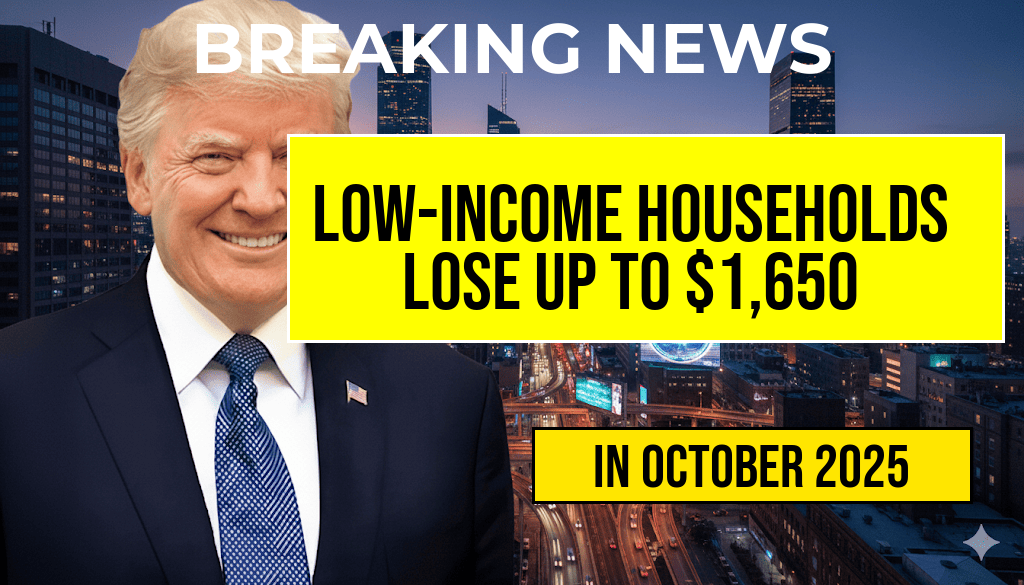Low-income households across the United States are facing significant financial setbacks as recent policy changes are projected to reduce their annual income by up to $1,650. These adjustments, primarily affecting social welfare programs and tax credits, are part of a broader federal initiative aimed at budget realignment and fiscal responsibility. Experts warn that the cumulative impact could deepen economic inequalities, especially for families already struggling to meet basic needs. With an estimated income disparity widening, policymakers and community advocates are raising concerns about the long-term implications of these reforms.
Details of the Policy Changes
Reduction in Tax Credits and Social Benefits
The new policy measures include narrowing eligibility criteria for key tax credits such as the Child Tax Credit (CTC) and Earned Income Tax Credit (EITC). Additionally, modifications to SNAP (Supplemental Nutrition Assistance Program) benefits and housing assistance programs are expected to tighten access for many low-income families. These changes are projected to disproportionately impact households with incomes below 200% of the federal poverty line, which the U.S. Census Bureau estimates to include approximately 27 million Americans.
Projected Financial Impact
| Household Income Level | Average Annual Reduction |
|---|---|
| Below $20,000 | $1,650 |
| $20,000 – $40,000 | $1,200 |
| $40,000 – $60,000 | $800 |
For households earning less than $20,000 annually, the combined effect of reduced benefits and tax credits could amount to a loss of up to $1,650 per year. Families in the $20,000 to $40,000 range may see reductions approaching $1,200, further straining their ability to cover essentials such as housing, healthcare, and food.
Implications for Low-Income Families
Economic Strain and Increased Poverty Risks
Financial analysts warn that these policy shifts could push more families into poverty or deepen existing hardships. As benefits diminish, households may need to cut back on essential expenses, potentially leading to increased reliance on emergency aid or borrowing. Nonprofit organizations and community groups are already observing heightened demand for assistance programs, signaling a tangible uptick in economic distress.
Potential Impact on Children’s Well-Being
Children in low-income families are particularly vulnerable to these changes. Reduced income and support can affect access to quality education, healthcare, and nutritious food, which are critical for healthy development. Studies have linked consistent access to social programs with better educational outcomes and improved health metrics among disadvantaged children, underscoring the seriousness of these policy adjustments.
Government and Community Responses
Official Statements and Criticism
Federal agencies defend the policy modifications as necessary steps toward fiscal responsibility, emphasizing the importance of balancing budget priorities with social needs. In a statement, the Department of Health and Human Services highlighted efforts to streamline assistance programs and ensure program integrity. However, advocacy groups such as the National Consumer Law Center criticize the reforms, arguing they threaten to undo years of progress in reducing poverty among vulnerable populations.
Calls for Policy Reversal and Support Measures
Several lawmakers and community leaders have called for a reevaluation of the policy changes, emphasizing the need to protect low-income households from further economic hardship. Proposals include restoring previous benefit levels, expanding eligibility, and implementing targeted relief measures to offset losses. Some states are exploring supplementary programs to support families affected by federal reductions, though these efforts vary widely across jurisdictions.
Broader Context and Future Outlook
Historical Perspective on Social Support Programs
Historically, social safety nets such as the EITC and SNAP have played crucial roles in reducing poverty and promoting economic mobility. According to research from the Wikipedia entry on social safety nets, these programs have contributed to lowering child poverty rates and stabilizing families during economic downturns.
What Experts Say About the Policy Shift
Economists warn that scaling back support measures at a time when inflation remains elevated could exacerbate economic inequalities and hinder recovery efforts. Dr. Lisa Adams, an economist at the Urban Institute, notes that “reducing benefits during a period of economic uncertainty risks creating a cycle of hardship that can have long-lasting effects on vulnerable populations.”
Resources for Affected Families
- Local community centers and social service agencies often provide assistance with benefits applications and financial counseling.
- Families seeking immediate support can visit USDA’s SNAP resources to explore eligibility and application procedures.
- For broader economic assistance, the USA.gov benefits page offers comprehensive guidance on federal and state programs.
Frequently Asked Questions
What is the main impact of the new policy changes on low-income households?
The new policy changes are expected to result in an income reduction of up to $1,650 for low-income households, potentially affecting their ability to cover essential expenses.
Which households are most affected by these policy changes?
Low-income households that rely heavily on government assistance or fixed incomes are most impacted, as the policy reduces their overall income levels.
When will these policy changes take effect?
The income reductions are scheduled to begin from the upcoming fiscal year, with detailed implementation dates announced by authorities shortly.
Are there any support measures available to help affected households?
Yes, various support measures such as targeted assistance programs and financial aid options are available to mitigate the impact on low-income families.
How might these policy changes influence the overall cost of living for low-income households?
The income reduction could lead to increased financial strain, making it more challenging for low-income households to manage basic needs like housing, food, and healthcare.










